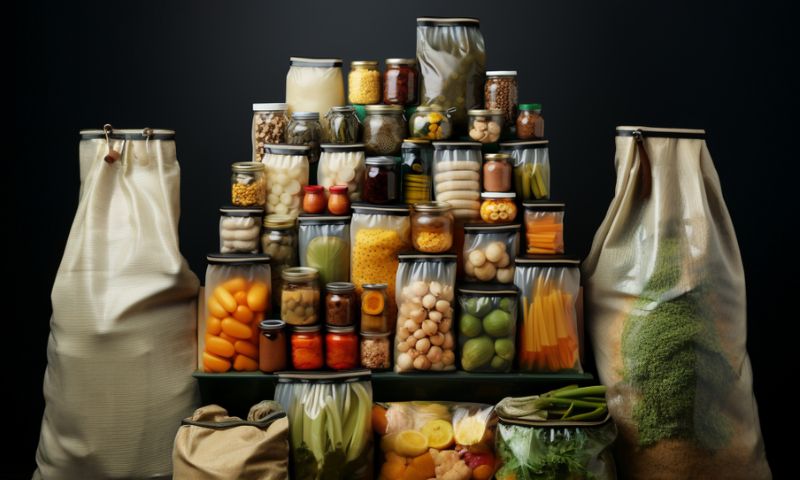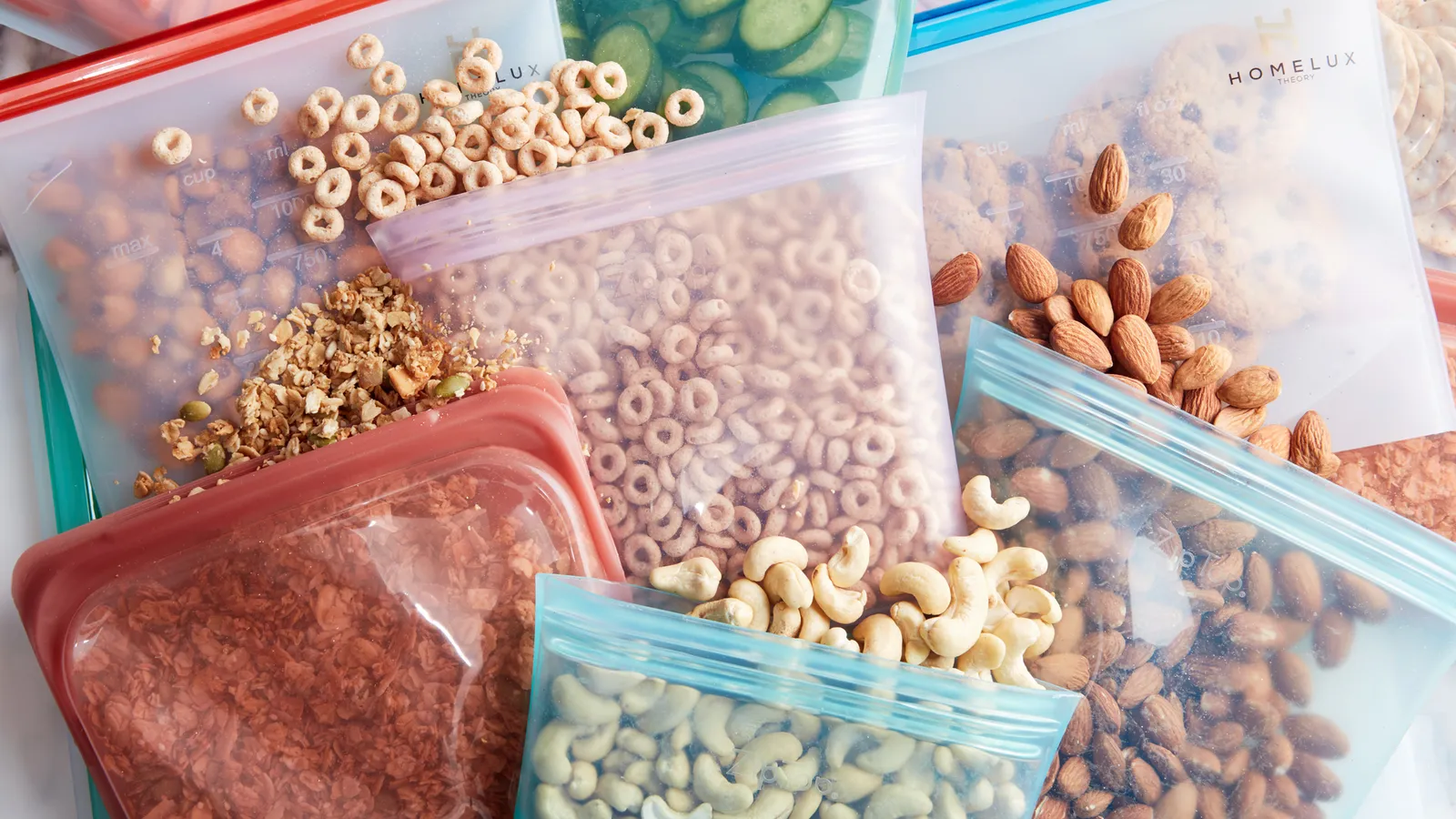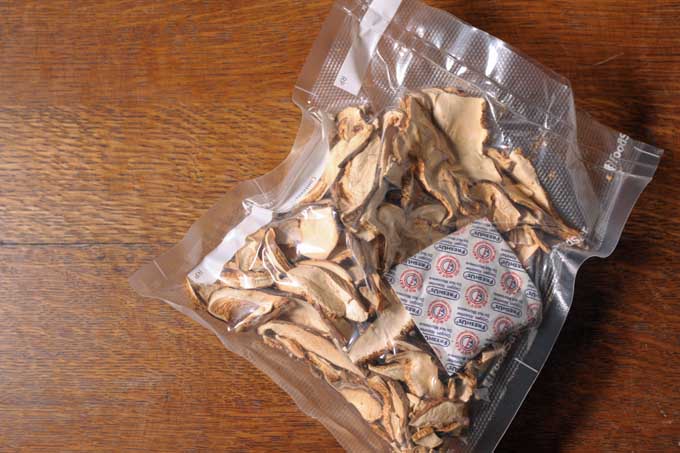The prospect of long-term food storage can be daunting. However, using the right storage solutions like food bunker storage bags can simplify the process and guarantee better results.
Food bunker storage bags are specially designed containers for long-term food preservation. These bags are typically made of high-quality materials such as Mylar or thick polyethylene, providing superior protection against air, light, and moisture.
Intrigued about turning your pantry into a food bunker? Continue reading to understand the ins and outs of bunker storage bags, from selecting the right type to properly packing and sealing your food.
What Are Food Bunker Storage Bags?
Food bunker storage bags are a significant asset for those looking to store food that lasts forever. But why are they so useful, and how do they differ from other storage methods?

Why Use Food Bunker Storage Bags?
Food bunker storage bags are designed to protect food from air, light, and moisture – the three key contributors to food degradation. Made from materials like Mylar or thick polyethylene, these bags are robust and puncture-resistant, ensuring that your food stays safe from the outside environment.
Moreover, these storage bags are available in various sizes to accommodate different food quantities. Whether you’re storing grains for a year or any cheap foods that last a long time, food storage bags can adapt to your needs, making them a versatile choice for food preservation.
Durability and Strength of Food Bunker Storage Bags
One of the main advantages of food storage bags is their toughness. They are designed to resist punctures and tears, which is especially important when storing sharp-edged items like pasta or grains or any top prepper foods.
In addition to being physically durable, these bags can also withstand a wide range of temperatures. This makes them suitable for use in a variety of environments, whether you’re storing food in a hot garage or a cold basement.
Food Bunker Storage Bags vs. Other Storage Methods
Compared to other storage methods, food storage bags offer a few unique advantages. Their flexible design allows you to store a large amount of food in a small space, and they are lighter and easier to handle than glass jars or metal cans.
Furthermore, unlike containers made of plastic or glass, bunker storage bags are not permeable to gasses. This means they do a better job of keeping oxygen out and preserving the quality of your stored food. Plus, they are resealable, making it easy to use part of your stored food and keep the rest fresh.
Choosing the Right Food Bunker Storage Bags
With a basic understanding of what food storage bags are, it’s crucial to delve into how to choose the right ones for your needs. This involves understanding different types, the importance of oxygen absorbers, and evaluating bag size and material.
Understanding Different Types of Food Bunker Storage Bags
There are various types of food storage bags, but the most common are Mylar bags and thick polyethylene bags.

Mylar bags are popular because they provide an excellent barrier against oxygen, light, and moisture. They’re typically used with oxygen absorbers to remove any remaining oxygen inside the bag after sealing.
Polyethylene bags are another good option. They are thick, sturdy, and provide a fair amount of protection against oxygen and moisture. However, they are not as effective as Mylar bags at blocking light, so it’s best to store them in a dark place.
The Role of Oxygen Absorbers in Food Bunker Storage Bags
Oxygen absorbers play a crucial role in maintaining the quality of food stored in bunker storage bags. These small packets contain iron powder that reacts with oxygen to form rust, thereby removing oxygen from the environment inside the bag.
Using oxygen absorbers in conjunction with food storage bags can greatly extend the shelf life of your food. They are particularly effective for preserving 30-year shelf-life foods, such as grains and beans, which can stay fresh for years when stored properly.
Evaluating Bag Size and Material for Your Needs
When choosing food bunker storage bags, consider what type of food you will be storing and how much of it. Smaller bags are ideal for portion control, while larger bags are great for bulk storage.
The material of the bag is also important. As previously mentioned, Mylar bags are superior for long-term food storage due to their excellent barrier properties. However, polyethylene bags can be a good alternative for shorter-term storage or if cost is a concern.
Storing Different Types of Food in Bunker Storage Bags
Now that you know how to choose the right food storage bags, let’s dive into how to store different types of food in them. Proper sealing is a crucial first step, followed by best practices for storing dry goods and tips for managing liquid or moist foods.
How to Properly Seal Food Bunker Storage Bags
Properly sealing your food storage bags is key to preserving your food. Start by filling the bag with your chosen food item, leaving enough room at the top to seal the bag. Make sure to remove as much air as possible before sealing to minimize oxygen exposure.
Once filled, the bag can be sealed using a heat sealer for the best results. If a heat sealer isn’t available, a household iron can also be used. Be sure to check the seal to ensure it’s secure and there are no leaks.

Best Practices for Storing Dry Goods in Bunker Bags
Dry goods, with 20-year shelf life foods, like grains, beans, and pasta are excellent candidates for storage in food bunker bags. These foods do not contain much moisture, which makes them less likely to spoil and ideal for long-term storage.
Before sealing the bag, it’s a good idea to add an oxygen absorber to further extend the shelf life of the food. Remember to label each bag with the contents and the date of packaging so you can easily keep track of your food storage.
Tips for Storing Liquid or Moist Foods in Bunker Bags
While food bunker bags are primarily used for dry foods, they can also be used for some types of liquid or moist foods. However, it’s important to freeze these foods first to prevent them from leaking when the bag is sealed.
For instance, you can store cooked soups, stews, or sauces by freezing them in a tray or shallow dish, then transferring the frozen blocks to a food bunker bag. This allows you to enjoy your favorite prepared meals long after they were cooked.
Managing Your Food with Bunker Storage Bags
Efficiently managing your food stockpile is as important as storing it. Regular inspections, implementing a rotation system, and dealing with common issues are integral to maintaining a well-stocked and safe food supply.
Regular Inspection and Maintenance of Stored Food
It’s important to regularly inspect your stored food for signs of spoilage or pest infestation. Look for any changes in color, smell, or texture, as these can indicate that the food is no longer safe to eat.

Additionally, check the physical condition of your food bunker storage bags. Any tears, punctures, or signs of wear could compromise the food inside and should be addressed immediately.
Implementing a Rotation System for Your Stored Foods
A rotation system helps ensure that none of your stored food goes to waste. Simply put, this means using older food first and adding new food to the back of your storage area.
Labeling each bag with the date it was packed will help with this process. Regularly rotating your food storage also gives you a chance to check for any issues and take action before they become major problems.
Dealing with Common Issues in Food Storage
Despite your best efforts, you may occasionally encounter issues with your food storage. This could be anything from a seal that didn’t quite close, to discovering a pest infestation.
In such cases, it’s important to address the problem as soon as possible to prevent further damage. This might mean resealing a bag, discarding contaminated food, or investing in better pest control methods.
You might be interested to read about the best foods to dehydrate for long-term storage.
Making the Most of Your Food Bunker Storage Bags
Food storage bags offer a practical and effective solution for long-term food storage. They protect food from the main culprits of spoilage – light, oxygen, and moisture – and their flexible nature makes them easy to store.
By understanding the types of bags, choosing the right one for your needs, and following proper storage procedures, you can maximize the lifespan of your food supply.
Whether you’re storing food for an emergency, planning for a long winter, or simply want to take advantage of bulk purchases, food bunker storage bags can help. So go ahead, get started with your food storage journey and reap the benefits of having a well-stocked pantry.
